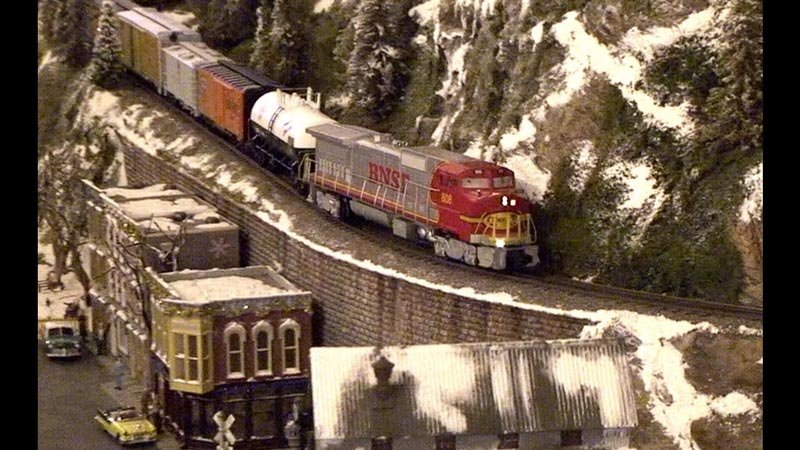Joshua Lionel Cowen of United States was an inventive guy and had always been very interested in trains. When he was seven, he whittled a miniature locomotive from wood. It exploded, however, when he tried to fit it with a tiny steam engine. Joshua had never forgotten his childhood experiment. In 1901, he fitted a small motor under a model of a railroad flatcar, a battery and 30 inches of track and the Lionel electric train was born.
Joshua was born on Henry St. in Manhattan’s Lower East Side on August 25, 1877. He preferred playing ball, bicycling, hiking and tinkering with mechanical toys to formal education, and soon became fascinated with electricity, its transmission and its storage in batteries.

Cowen did so well in school that in 1893 he entered the College of the City of New York. But, he could not adjust to the confines of a formal education. In short order he dropped out, returned, again dropped out, enrolled at Columbia University, and dropped out there to become an apprentice to Henner & Anderson, an early dry cell battery manufacturer. Then he took a job at the Acme Lamp Company in New York as a battery lamp assembler. During his spare time he liked experimenting, one of many mechanically inclined young men who liked to tinker with things. These jobs gave Cowen the experience he needed to launch Lionel.
In 1899, he patented a device for igniting photographers’ flash powder by using dry cell batteries to heat a wire fuse. Cowen than parlayed this into a defence contract to equip 24,000 Navy mines with detonators. His ignorance of armament manufacture did not stop him. He used mercuric fulminate, a sensitive and powerful explosive (his supplier’s deliveryman told him, “The company said you should always keep a good deal around. It’s better to be dead than maimed.”), and delivered the fuses to the Brooklyn Navy Yard on time by horse-drawn wagon at a gallop. In January 1900, he filed his second patent which improved on the his first design but again failed to give details.
On September 5, 1900, Cowen and a colleague from Acme, Harry C. Grant, started a business in lower Manhattan called the Lionel Manufacturing Company, but they had nothing to manufacture. One hot day when Cowen was sitting in his office waiting for a cool breeze he got the idea of an electric fan. He quickly assembled and marketed the electric fan, but the weather soon cooled and so did public interest. Soon after, Cowen was walking through lower Manhattan when he stopped at a toy store window where he saw, among the toys, a push train. He then had the vision of it going around a circle of track without needing attention. This was the vision, which started a legend.
Cowen designed his first train, the Electric Express, not as a toy, but as an eye-catching display for toy stores. During Lionel’s early days, Americans were captivated by the railroads and awed by electricity.
Cowen and Grants first customer was Ingersoll, the owner of the shop where Cowen saw the push train. Their first product was a large but simple, open gondola, called the ‘Electric Express’, propelled by the previous fan motor. The track was merely two steel strips inserted into slotted ties with a 2 7/8 inch width between the rails, and was powered by a battery. Lionel’s first trains were powered by a battery, soon replaced by the 110-volt electric transformer. Customers became curious about the Electric Express and, eventually, twelve of the showpieces Lionel trains were sold.
In June 1902 they decided to add something more interesting to the line with a ‘City Hall Park’ trolley and a two foot suspension bridge. In 1903 they brought out an electric B & O locomotive and a motorized derrick car, and the original gondola was changed from wood to metal.
Several changes occurred in 1904. Cowen married Cecelia Liberman, the Lionel workshop was moved nine blocks to the north, and Cowen hired an Italian Immigrant, Mario Caruso. In future years it would be Caruso who did the dirtier job of keeping the factory running smoothly while Cowen managed sales.
In 1906 a great change took place in the line. In that year Lionel added a third rail which carried the current and the outer rails, which were the ground rails, were only 2 1/8 inches apart. This was the system adopted by most other manufacturers. They were rigidly pre-assembled. Three trolleys, two steam engines, two passenger cars, seven freight cars and a wall transformer were offered. Cowen’s son, Lawrence, was born in 1907, and became the company’s emblem on boxes and in catalogues and was later to become its President.
Lionel trains proved to be very popular, and before long Joshua Cowen was manufacturing cattle cars, coal cars, passenger cars, train stations, and tunnels. By 1909 Cowen was calling his trains The Standard of the World.’ As more and more American homes were wired for electrical power, Lionel really took off. No toy benefited more from electricity than trains. It was 1910. Electric trains had become a big business.
In 1915, O-Gauge was introduced, which eventually became the most popular scale of train. Whatever the scale, Lionel Trains have become an active part of every child’s beginning throughout the ages.
In 1929, Cowen unveiled the Transcontinental Limited, which stretched nine feet from its massive headlight to its ornate observation platform, complete with brass rail. It cost $110—more than a used Model T. The company was able to weather the Depression, when there was little money to spend on toys, and World War II, when there were no metals available to build toys with. Many collectors believe the trains and accessories that Lionel made in the two decades following World War II were the firm’s best, and they focus on the products from those years.
